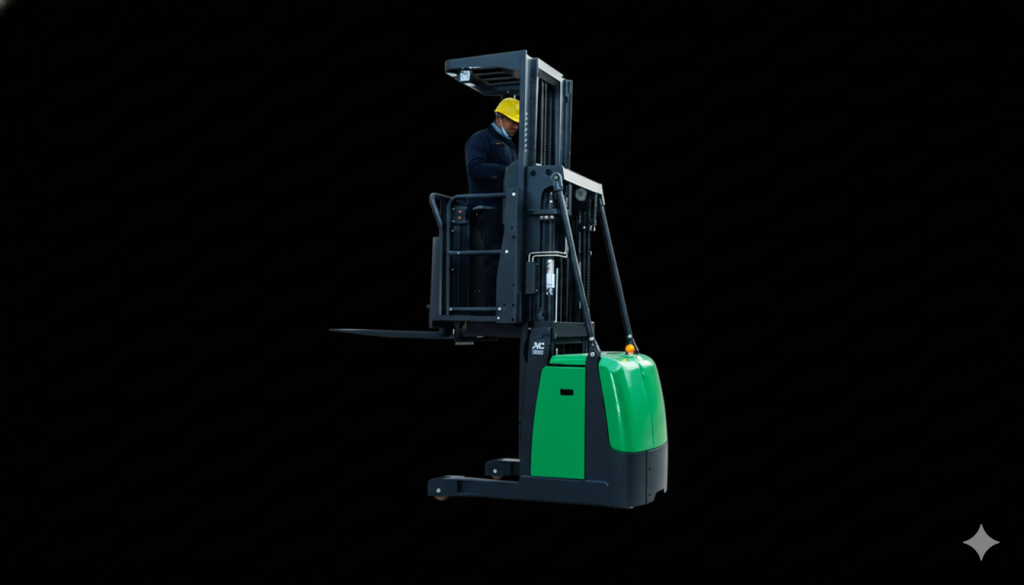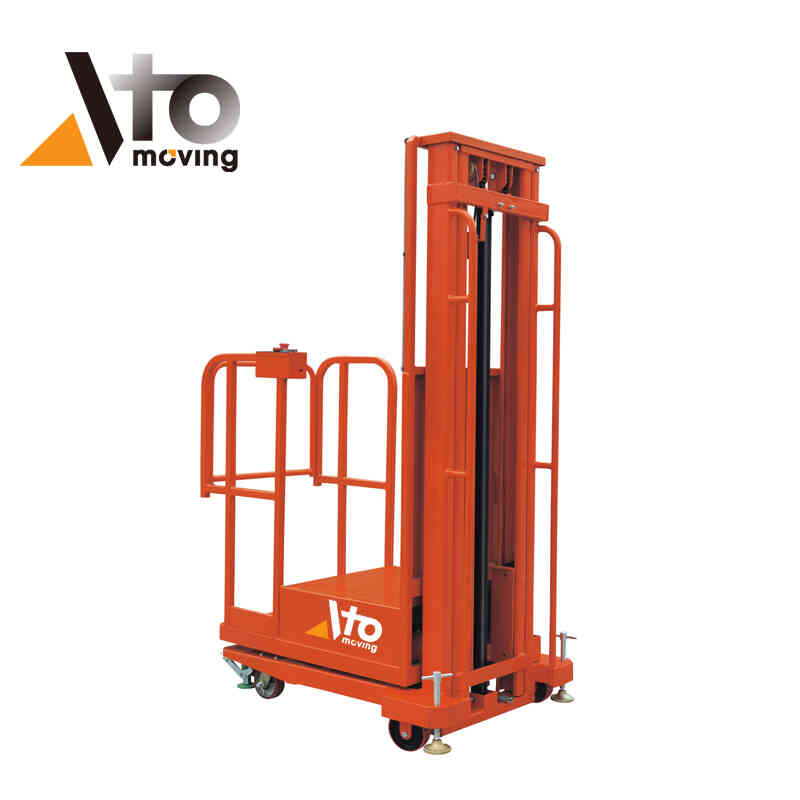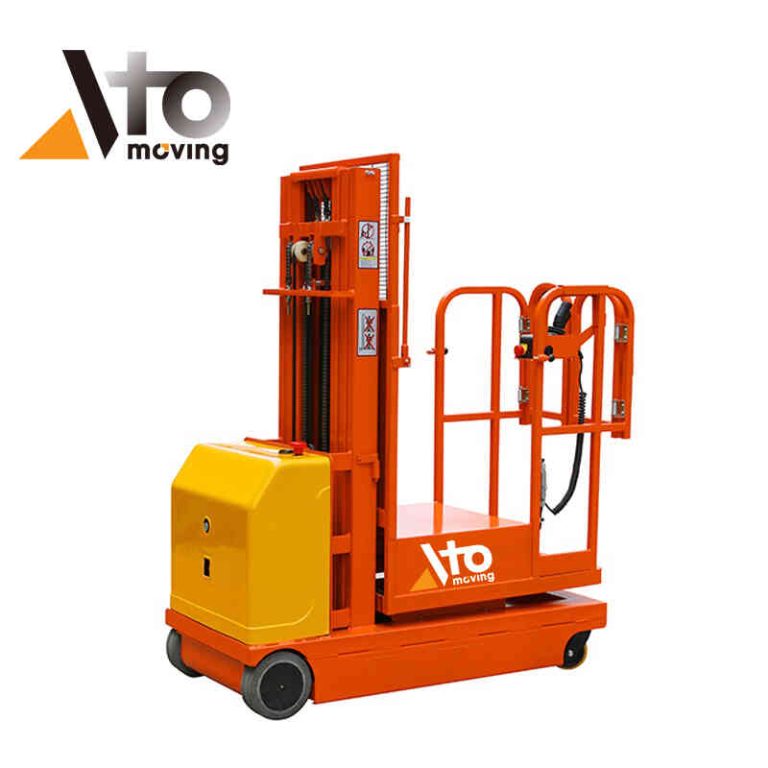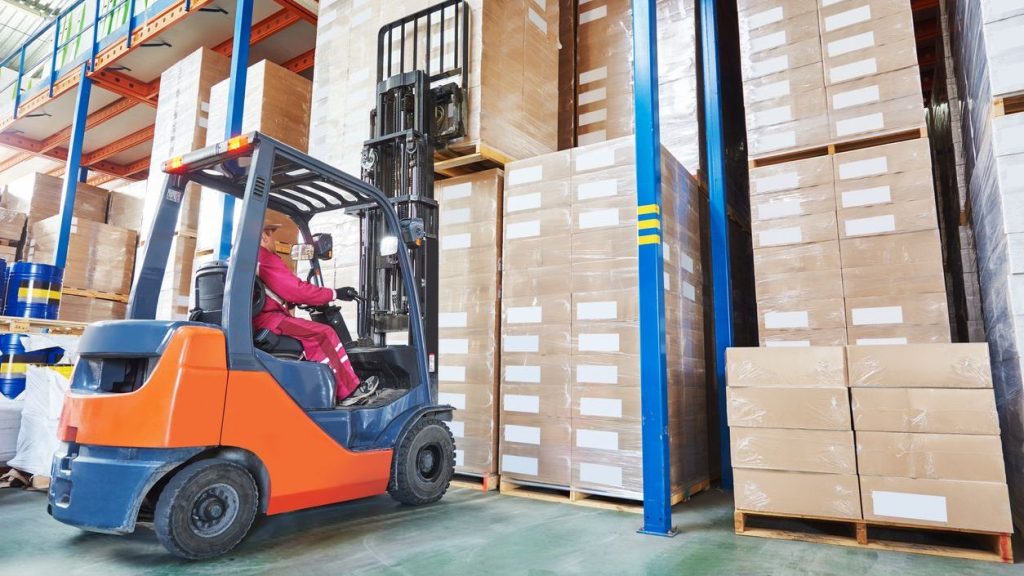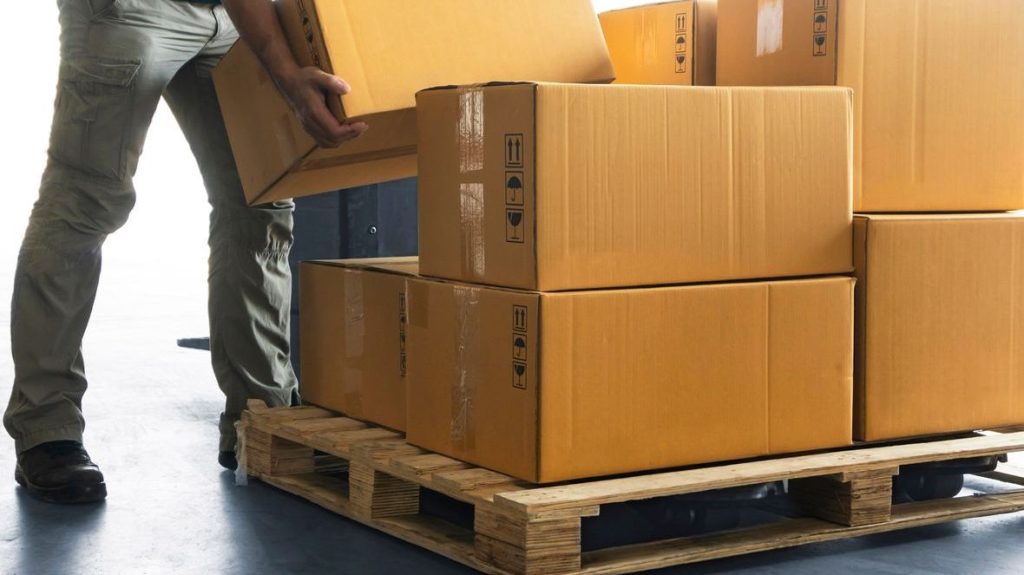In today’s fast-paced warehouse and distribution environments, efficiency in order picking operations can make or break your bottom line. Order picker forklifts have revolutionized how businesses handle inventory retrieval, particularly in high-density storage facilities where vertical space utilization is crucial. These specialized material handling machines enable operators to safely access products stored at various heights while maintaining productivity and accuracy.
Understanding the different types of order picker forklifts is essential for warehouse managers, logistics professionals, and business owners looking to optimize their operations. Each type offers unique advantages suited to specific applications, ceiling heights, load requirements, and operational workflows. Whether you’re managing a retail distribution center, third-party logistics operation, or manufacturing facility, selecting the right order picker can significantly impact your picking speed, worker safety, and overall operational costs.
This comprehensive guide explores the various types of order picker forklifts available in the market, their distinctive features, ideal applications, and key considerations to help you make informed equipment decisions for your material handling needs.
What Are Order Picker Forklifts?
Order picker forklifts, also known as stock pickers or cherry pickers, are specialized material handling vehicles designed to elevate operators to various heights for manual picking of individual items or cases from storage racks. Unlike traditional forklifts that lift only the load, order pickers raise both the operator and the load platform, allowing workers to access products directly at their storage location.
Core Components and Functionality
These machines typically feature an operator platform or cage that rises vertically along a mast system. The operator stands on this platform with controls at their fingertips, enabling them to drive, elevate, and maneuver while picking items. Most order pickers include a small pallet or load platform adjacent to the operator where picked items are placed before being lowered to ground level.
Primary Applications
Order picker forklifts excel in environments requiring frequent access to individual SKUs stored at multiple vertical levels. Common applications include:
- Retail distribution centers with high SKU counts
- E-commerce fulfillment operations
- Third-party logistics facilities
- Parts warehouses and service centers
- Cold storage facilities
- Manufacturing component storage areas
The versatility and efficiency of order pickers make them indispensable in operations where vertical space optimization and pick accuracy are paramount.
Low-Level Order Pickers
Low-level order pickers represent the entry point for businesses transitioning from manual picking methods to mechanized solutions. These compact machines typically offer lift heights ranging from 10 to 15 feet, making them ideal for operations with lower racking systems.
Design Characteristics
Low-level pickers feature a relatively simple design with a smaller footprint compared to their taller counterparts. The operator platform elevates just enough to access the first two or three rack levels, and many models offer stand-on operation rather than fully enclosed cabs. These units prioritize maneuverability in confined spaces, with tight turning radiuses that allow navigation through narrow warehouse aisles.
Advantages and Applications
The primary benefits of low-level order pickers include:
Cost-effectiveness: Lower initial investment and reduced maintenance costs compared to high-reach models make these accessible for smaller operations or those just beginning to mechanize their picking processes.
Ease of operation: The limited lift height translates to reduced operator training requirements and lower operational risk, making these machines suitable for facilities with high operator turnover.
Maneuverability: Compact dimensions enable operation in tighter spaces and narrower aisles than larger order pickers require.
Versatility: Many low-level pickers can function as both order pickers and stock replenishment vehicles, maximizing equipment utilization.
Low-level order pickers work best in facilities with ceiling heights under 20 feet, moderate throughput requirements, and operations handling bulkier items that don’t require extreme vertical storage density.
Medium-Level Order Pickers
Medium-level order pickers bridge the gap between low-level and high-reach models, offering lift heights typically between 15 and 25 feet. These versatile machines represent the sweet spot for many distribution operations, balancing reach capability with operational costs and complexity.
Technical Features
Medium-level pickers incorporate more robust mast systems and enhanced stability features compared to low-level models. They often include operator restraint systems, improved visibility features, and more sophisticated control mechanisms. The increased lift capacity requires more powerful electric motors and larger battery systems, extending operational time while maintaining productivity.
Operational Benefits
Optimized vertical space utilization: Medium-level pickers enable facilities to implement three to four-level racking systems, significantly increasing storage density without requiring specialized infrastructure.
Enhanced productivity: The additional reach allows operators to complete picks across more rack levels without repositioning equipment, reducing travel time and improving pick rates.
Improved ergonomics: By bringing operators to optimal picking heights, these machines reduce the physical strain associated with reaching overhead or bending low, contributing to better worker safety and reduced injury rates.
Scalability: Medium-level pickers accommodate growth, allowing operations to expand vertically as inventory requirements increase without immediately investing in high-reach equipment.
These machines suit facilities with moderate to high throughput requirements, diverse product mixes, and ceiling heights between 25 and 30 feet. They represent the most common choice for general distribution center applications.
High-Level Order Pickers (Vertical Order Pickers)
High-level order pickers, often called vertical order pickers or VNA (Very Narrow Aisle) order pickers, represent the pinnacle of vertical reach capability in order picking equipment. These sophisticated machines can elevate operators to heights exceeding 30 feet, with some specialized models reaching 40 feet or more.
Advanced Engineering
High-level pickers incorporate significant engineering complexity to ensure operator safety at extreme heights. Key features include:
Reinforced mast systems: Triple or quad-stage masts provide stability during elevation while maintaining compact lowered heights for transit through doorways and under overhead obstacles.
Enhanced safety systems: Comprehensive operator restraints, emergency descent systems, anti-tip mechanisms, and stability controls are standard equipment.
Precision controls: Advanced joystick or proportional controls allow smooth, precise movements essential when working at significant heights.
Wire guidance systems: Many high-level pickers operate in very narrow aisles (5-6 feet) using wire or rail guidance systems that keep the machine centered and prevent rack contact.
Maximum Warehouse Density
The primary advantage of high-level order pickers lies in their ability to maximize cubic storage utilization in facilities with high ceilings. By accessing five to seven rack levels or more, these machines enable:
Dramatic space efficiency: The same square footage can store two to three times more inventory compared to conventional racking accessible only by low-level equipment.
Reduced building costs: Existing facilities with high ceilings can be retrofitted with taller racking, avoiding expensive facility expansion or new construction.
Improved inventory organization: More rack levels allow finer categorization and slotting optimization, potentially improving pick efficiency despite the vertical travel component.
Operational Considerations
High-level pickers require significant operational commitment. Operators need comprehensive training and certification to safely work at height. The narrow aisles these machines operate in typically become one-way corridors, requiring careful warehouse layout and traffic management. Additionally, the specialized nature and higher initial cost mean these machines make economic sense primarily in high-volume operations where maximum space utilization justifies the investment.
Ideal applications include high-volume distribution centers, facilities with expensive real estate costs where vertical building is more economical than horizontal expansion, and operations with predictable, consistent throughput that can support dedicated equipment and specialized infrastructure.
Specialized Order Picker Variants
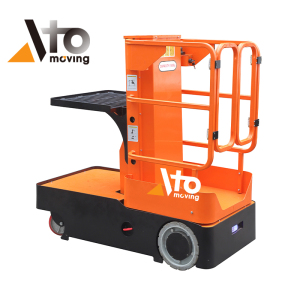
Beyond the standard classifications, several specialized order picker variants address specific operational challenges and industry requirements.
Turret Trucks
Turret trucks combine order picking capability with very narrow aisle operation through a unique rotating fork or load handling mechanism. Rather than the entire mast system moving, the turret head rotates to access products on either side of the aisle, eliminating the need for the truck to turn around. This design enables aisle widths as narrow as 5 feet while maintaining high picking productivity.
Order Picker Pallet Trucks
These hybrid machines function as both conventional pallet jacks and low-level order pickers. The operator platform elevates to modest heights (typically under 10 feet) while the unit retains pallet handling capability. This versatility suits operations requiring both ground-level pallet movement and occasional elevated picking.
Cold Storage Order Pickers
Designed specifically for freezer and cold storage applications, these specialized pickers feature enhanced insulation, heated operator compartments, and components rated for extreme temperature operation. Special battery systems and hydraulics maintain performance in sub-zero environments where conventional equipment would fail.
Outdoor Order Pickers
Some manufacturers offer ruggedized order pickers with weather-resistant enclosures, enhanced lighting systems, and all-terrain capabilities for outdoor storage yard applications or facilities without climate control.
Double-Deep Order Pickers
Equipped with extended or telescoping forks, double-deep order pickers can access products stored two pallets deep in specialized racking systems, further increasing storage density in operations where product velocity supports this configuration.
Each specialized variant addresses specific operational requirements, demonstrating the material handling industry’s ability to customize solutions for diverse applications.
Key Factors in Selecting Order Picker Forklifts
Choosing the appropriate type of order picker forklift requires careful analysis of multiple operational factors to ensure optimal return on investment.
Facility Infrastructure
Ceiling height represents the primary constraint, as your available vertical clearance determines maximum viable lift height. Consider not just current racking but potential future expansion. Aisle width equally influences equipment selection—high-level pickers often require narrow aisles that may necessitate warehouse layout modifications. Floor condition and levelness become increasingly critical as lift height increases, as uneven surfaces create stability and safety concerns.
Operational Requirements
Throughput volume helps determine whether the productivity gains of higher-reach equipment justify the additional investment. SKU count and product mix influence how many vertical levels benefit your operation—facilities with thousands of SKUs typically justify taller racking and corresponding equipment. Order profiles including lines per order and case quantities affect which picking method and equipment type optimizes efficiency.
Load Characteristics
Consider the weight and dimensions of typical picks. Heavier items may require lower-level picking for safety reasons, while lighter products can be efficiently picked at any height. Product fragility might influence whether higher drops from elevated picking stations are acceptable.
Workforce Considerations
Operator skill levels and training capacity vary significantly. High-level pickers require more extensive training and certification. Labor availability in your market might favor equipment that’s easier to learn, reducing training time and operator anxiety around working at heights.
Financial Analysis
Beyond initial purchase or lease costs, evaluate total cost of ownership including maintenance, battery replacement, and energy consumption. Utilization rates determine whether specialized equipment makes economic sense—low utilization may favor more versatile, multi-purpose machines.
Working with experienced material handling equipment dealers and conducting thorough application assessments ensures you select order picker types that align with both current operations and future growth trajectories.
Conclusion
The diverse types of order picker forklifts available today reflect the material handling industry’s evolution to meet increasingly complex warehousing challenges. From compact low-level pickers ideal for smaller operations to sophisticated high-reach vertical order pickers maximizing cubic storage utilization, each type offers distinct advantages for specific applications.
Low-level order pickers provide accessible entry points for mechanizing picking operations while offering excellent maneuverability and cost-effectiveness. Medium-level pickers represent the versatile workhorses of modern distribution centers, balancing reach, productivity, and operational costs. High-level vertical order pickers unlock maximum storage density potential in facilities with tall ceilings and high-volume throughput justifying the specialized infrastructure they require.
Specialized variants including turret trucks, cold storage models, and hybrid designs further demonstrate how order picker technology continues advancing to address niche operational requirements across diverse industries.
Successful order picker selection requires comprehensive analysis of your facility characteristics, operational requirements, product mix, and financial parameters. The right equipment choice significantly impacts warehouse productivity, worker safety, space utilization, and ultimately your competitive position in the market.
As warehouse automation and technology integration continue evolving, order picker forklifts remain fundamental tools in the material handling arsenal, with ongoing innovations in safety systems, energy efficiency, and operator assistance technologies ensuring these machines continue meeting the demands of modern logistics operations.
Frequently Asked Questions
What is the difference between an order picker and a reach truck?
Order pickers elevate both the operator and a platform to height, allowing workers to manually select individual items from racks. Reach trucks only lift the forks and load while the operator remains at ground level, making them ideal for full pallet handling rather than individual item picking. Order pickers optimize piece-picking operations, while reach trucks excel at pallet-level storage and retrieval.
How high can order picker forklifts reach?
Order picker lift heights vary significantly by type. Low-level models typically reach 10-15 feet, medium-level pickers extend to 15-25 feet, and high-level vertical order pickers can access heights of 30-40+ feet depending on the specific model and manufacturer. The maximum practical height depends on facility infrastructure, operator comfort, and safety regulations in your jurisdiction.
Do operators need special licensing to use order picker forklifts?
Yes, in most jurisdictions operators require certification specific to order picker operation. OSHA (in the United States) requires employer-provided training and evaluation for powered industrial truck operators, with specific requirements for elevated work platforms. High-level order pickers typically require more extensive training than low-level models due to the increased complexity and safety considerations of working at significant heights.
What safety features are standard on modern order pickers?
Contemporary order pickers include multiple safety features: operator restraint systems (harnesses or railings), emergency lowering mechanisms, stability control systems, automatic braking, audible alarms, enhanced lighting, anti-tip sensors, and overload protection. High-level models often incorporate additional features like tilt sensors, automatic speed reduction when elevated, and enhanced guard rails. Regular safety inspections and maintenance are critical regardless of built-in features.
Can order pickers operate in very narrow aisles?
Yes, certain order picker types specifically design for very narrow aisle (VNA) operation. High-level order pickers and turret trucks commonly operate in aisles as narrow as 5-6 feet using wire guidance or rail guidance systems. These configurations maximize storage density but require careful warehouse layout planning and typically establish one-way traffic patterns. Standard low and medium-level pickers generally require wider aisles (8-10 feet) for safe maneuvering.Retry

